Fallingwater: One, Bears: None
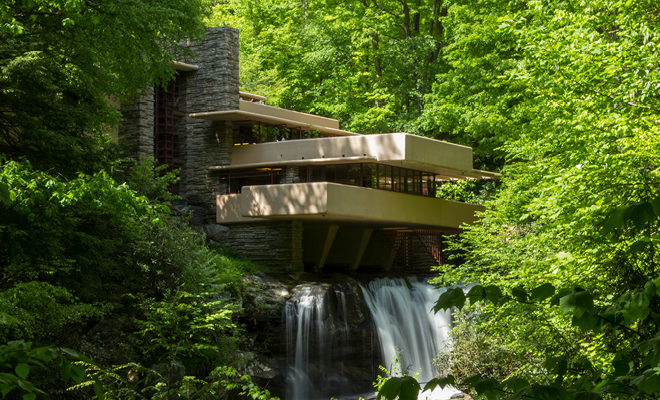
I recently visited an American icon, one of the hallmarks of twentieth century architecture and a newly-named UNESCO World Heritage site. Fallingwater is a Frank Lloyd Wright home designed for the Kaufmann family in 1935, set along Bear Run, PA. I saw lots of water falling, but sadly no bears running. The journey was like a pilgrimage for me, as a book dedicated to Fallingwater, displayed in my freshmen English class, first stirred my passion for architecture. Afterward, I started drawing classmates’ dream homes on graph paper during geometry and dreamt of a time I could visit. It took sixteen years, but it was worth the wait, and I’m glad I went when I did.
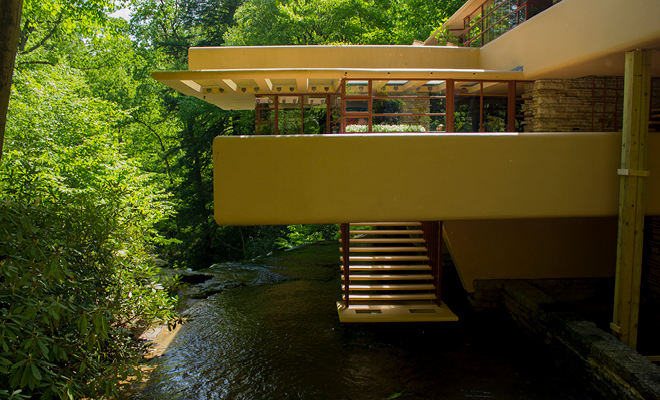
Although I knew Fallingwater was situated in the middle of nowhere, I didn’t realize so many people knew where nowhere was. After gathering in the visitor center, our tour group took a meandering hike until we turned a corner and, through the trees, it appeared. We were introduced to the long, horizontal spaces that seemingly float over the waterfall by a bridge that spans the tributary and leads uphill to the garage and guest house. These are the most iconic elements of the home, what I most anticipated analyzing, and are part of a series of strong vertical and horizontal lines that extrude from stone and extend into thin air. We toured every room and marveled at the expansive glass and the intricate details. The cantilevered structure is anchored to the same boulders that form part of the hearth and living room floor, connecting to the site in a literal and metaphorical manner. Wright’s emphasis on our connection to nature is essential to the home’s design. Each bedroom is small with low ceilings; and each has a large balcony, beckoning to the Kaufmanns and their guests to enjoy the outdoors.
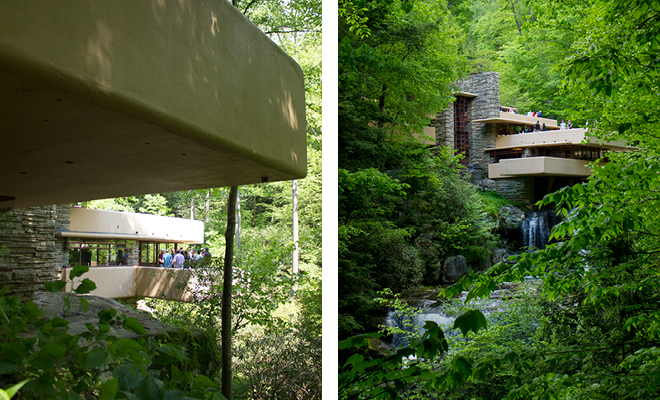
This beckoning evoked a conflict for my attention. My knowledge of the house was previously enraptured with the details, and on the tour, the guide would say, “Look at this here.” Yet, the home whispered, “No, no—look outside; join me out on the balcony and float with me. See the view the creek creates? See how the colors change in the light of cloud and sun? Can you hear anyone above the roar of the water?” The setting was the most moving; it was the simple beauty of nature. If I had visited too young, this would have been lost on me. I would have focused on the desk, cut at a curve to allow the door to swing, or the wax coating on the stone floor to make it appear wet, or the individual rocks sticking out enough to serve as the handrail leading upstairs. These were fascinating, but they were not the home’s entirety.
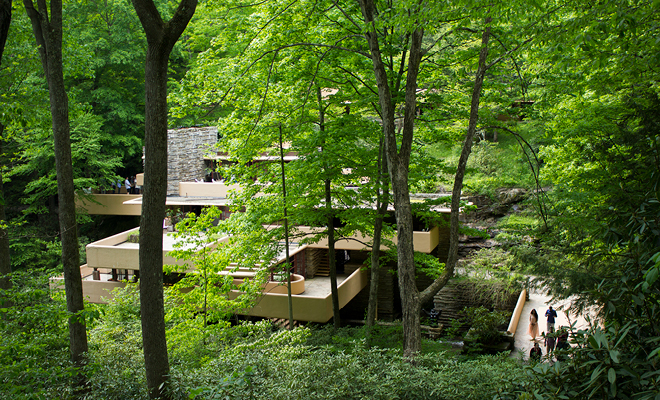
I’ve attached a video link—for listening. This iconic view, while inspiring, doesn’t capture the full effect. The sound was impossible to ignore. It was captivating and constant. It was pervasive, sonorous, and flowing—onward and onward. It drowned out all other sights and senses, until it had your sole attention, anchoring itself into your deep memories and floating in the back of your mind. It was breathtaking. It was Fallingwater.
These photos were taken by Anthony Fossi.


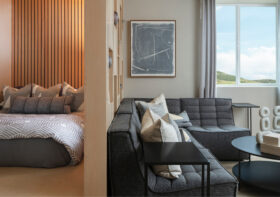

Leave a Reply